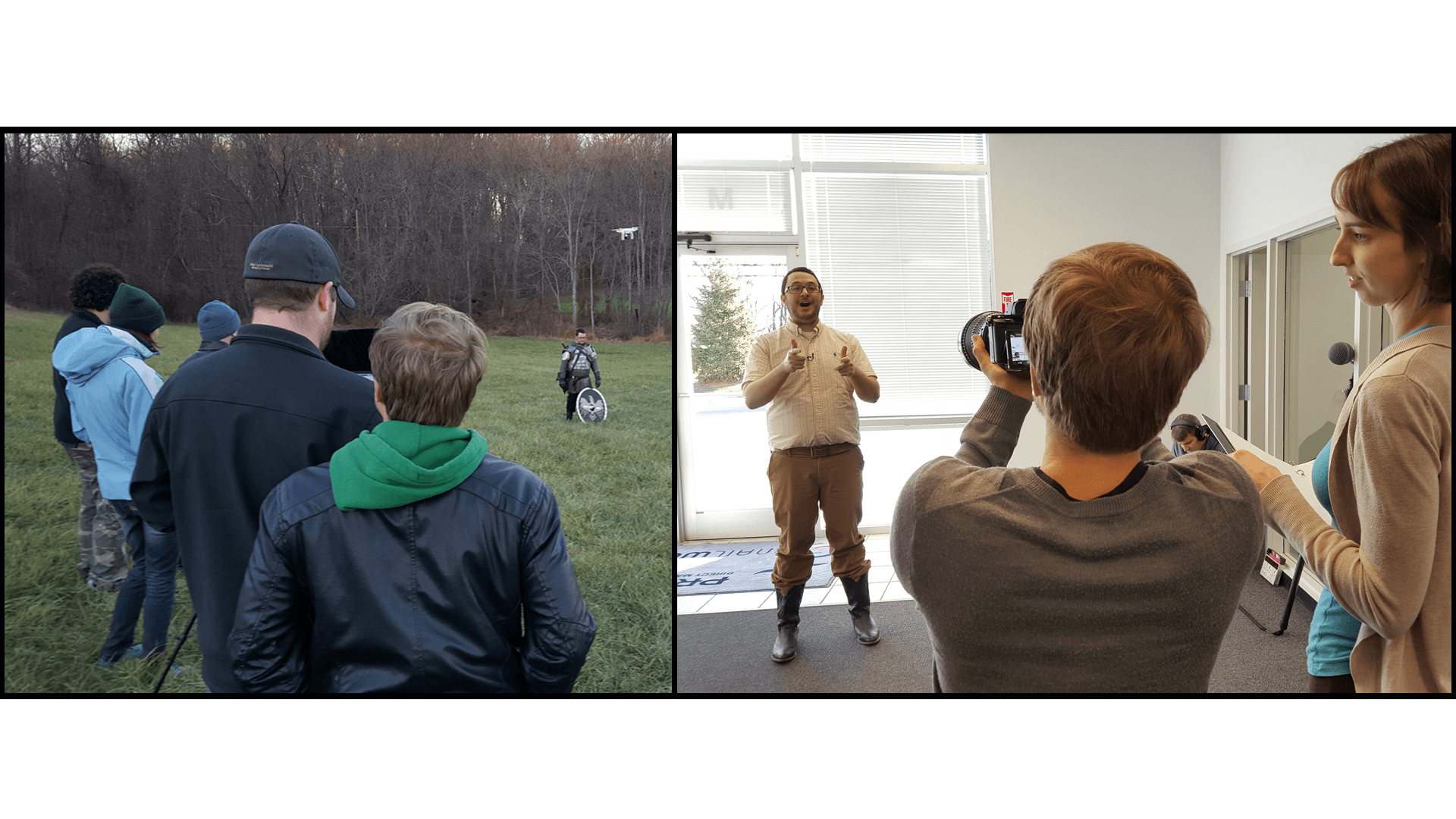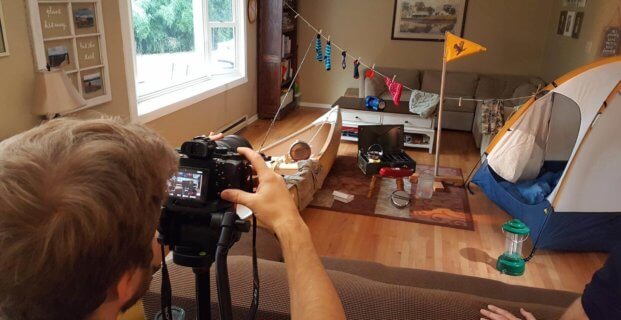 Choosing a location is a huge part of any project. “Location planning is critical to cost. How many locations are needed? Is travel required? Is a location fee required? Is special licensing required? Are accommodations needed for cast and crew? What transportation requirements are there at each location?” (Read more: How Much Does A Video Cost?)
Choosing a location is a huge part of any project. “Location planning is critical to cost. How many locations are needed? Is travel required? Is a location fee required? Is special licensing required? Are accommodations needed for cast and crew? What transportation requirements are there at each location?” (Read more: How Much Does A Video Cost?)
Location is often one of the first corners to get cut when trimming a budget. Why spend the cash on a studio space rental when you can just bring the camera into your personal office, or shoot an on-the-street style video just outside your office building?
The simple answer is “Because production is only one part of the project.” More often than not, location is one of the biggest factors that affects post-production time and budget. Factors such as sound, lighting, exposure, crowds, and passersby all directly influence your video simply because of where you put the camera.

For example, a busy street can be problematic because of traffic noise and unwanted onlookers making funny faces in the background. You also put yourself at the mercy of the elements. This means the obvious things – rain, wind and harsh temperatures – but also exposure. If the sky is blanketed by clouds, so much the better; that means free, consistent, diffused lighting. If it’s sunny, however, the subject – whether that’s you, your co-workers or actor(s) – may be strained by the brightness. Worse yet, the clouds could be dappled and fast-moving, causing your exposure to fluctuate repeatedly. This causes the obvious; shadows and changing exposures, but it can also lead to changes in color and tone that you may not even see on set, which, in turn, creates much more work for your editor and/or colorist. Just recently, I recorded a video at the newly-renovated facilities of the Church of Christ at Manor Woods; a wide-open lobby with multiple floor-to-very-high-ceiling windows.

The day I was there, it was staggeringly bright. Sun was pouring through the huge glass panes – but it was also windy and the clouds were aplenty, shuffling in and out of the light’s path. This didn’t just force me to consistently compensate for the back-and-forth lighting, it also limited where I could shoot within the space itself. While I did have lighting gear with me, setting it up and adjusting it between almost every shot would have eaten up my time. As it was later in the day, the light was continuing to change between shots anyway, so around and around I would go; adjusting, taking more time, adjusting for that time, readjusting, etc.
Recording both the interview and b-roll in the new space, rather than doing separate setups, gave the video an overall organic feel and highlighted the new design in a way that may have otherwise felt fragmented. It also showcased the scale and scope of the lobby, by seeing a person actually interact with the environment. What’s more, it was a quiet time of day for the church and the room itself was very sound proof.

Which brings me to sound. While things like ADR, foley and adding music are all delegated to the editing phase of a project, those elements can be radically cut down or drawn out, depending on the source media; specifically, the location. Live audio is a tricky business overall; shoddy sound lowers the quality of your video faster and far more drastically than sub-par visuals. If your actor or spokesperson is soft spoken, you may have to re-record their voice anyway, but if you are aware of this ahead of time (especially if it happens to be you), ensure a quiet atmosphere in which to record. Otherwise, be prepared to spend more time (and money) reciting all the lines again. Even if you have a clear, emphatic speaker, surrounding noise can still play a major role. This applies to smaller locations, too. If you’re recording indoors, whether an office building, house, cubicle or conference room, air conditioners, household appliances, echo, and pets (even those of the neighbors) can affect the sound, continuity and focus of the piece.
It comes back to the video itself: does the location matter? Does it have to be live, on-location, subject to these elements? Or, is a controlled atmosphere worth that extra time?
There really is no definitive answer; it’s a question that must be asked for each individual video, and sometimes, depending on the size or scope of the project, each scene or segment. Take, for example, our project from last year, GAME OF CAD: A Song of Design and Engineering. Our client, SOLIDWORKS, wanted to take an especially creative approach to their ad campaign for SOLIDWORKS World 2016. For the “epic fantasy trailer” concept, they allowed us to go all out on our production; wild, exterior locations, wardrobe, props and gear. The end result is one of our favorite videos to date with the location playing a huge role. We shot from mid-afternoon through sunset and full dark to acquire the sunset silhouette shots and fireside scenes, all quintessential for the fantasy genre.
Bottom line: location should be a key consideration for any project. Location not only affects production costs, it may have a strong impact on post-production time and expenses. Discuss it in detail with the vision and production team. Scout the location before the shoot. Be prepared so your crew and talent know what to expect. Thorough location planning and selection helps ensure a project meets the overall vision and budget.
Suggested further reading:
Premium Beat: 5 Tips For Getting Great Film / Video Locations For Free
How Much Does A Video Cost?

